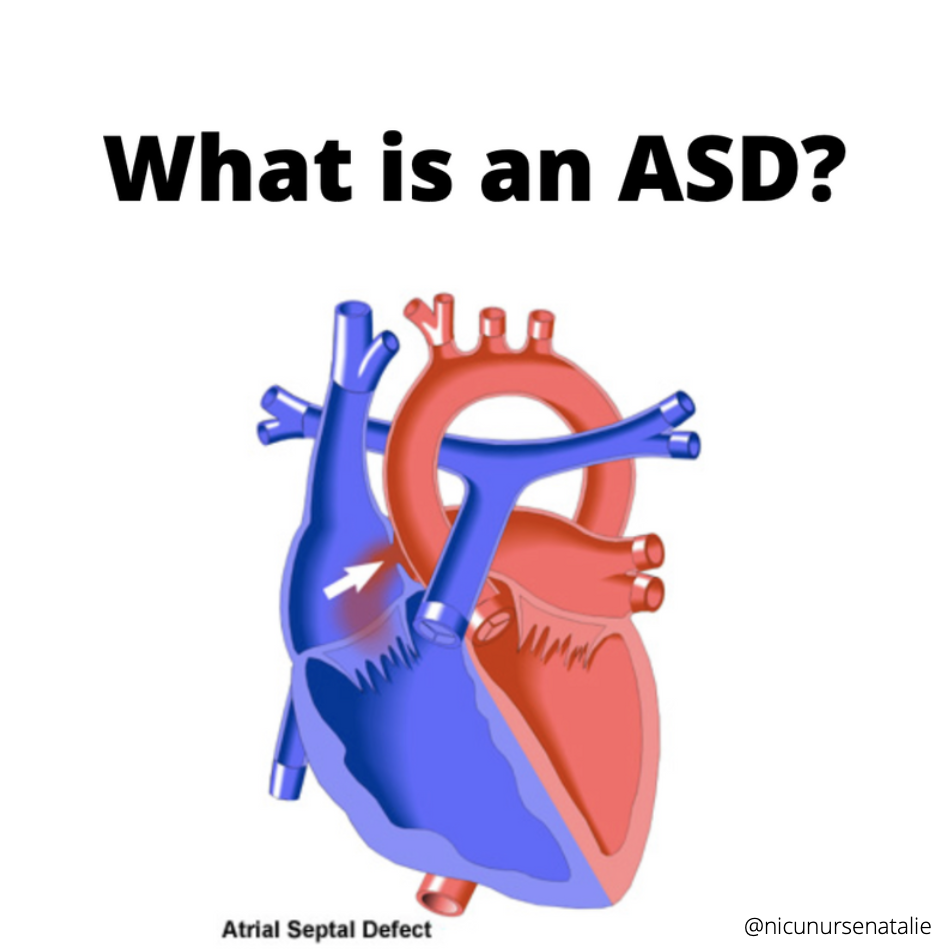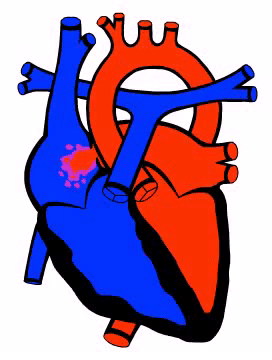What is an ASD?
An atrial septal defect is a hole in the atrial septum (muscle wall) that separates the upper chambers of the heart. Because of the low pressure in the right atrium, this hole typically allows oxygenated blood from the lungs to shunt from the left atrium to the right atrium. This blood travels to the right ventricle, which then pumps it back to the lungs rather than the body. An ASD may be single or multiple, can vary in sizes, and may occur anywhere on the atrial septum. The severity of the symptoms depends on all of those factors.
The following are some examples of signs and symptoms that you may see in an infant with EITHER an ASD or VSD due to increased blood flow, fluid overload, or congestive heart failure:
Brisk pulses
RDS
Murmur
Edema
Poor growth & development
Tachypnea and/or tachycardia
Increased WOB and fatigue
Sweating
Restlessness and look of panic
How is an ASD treated?
Surgical correction is the first line of treatment. They may be closed by patching or suturing during open heart surgery. It is a very common procedure and most babies recover very well!

